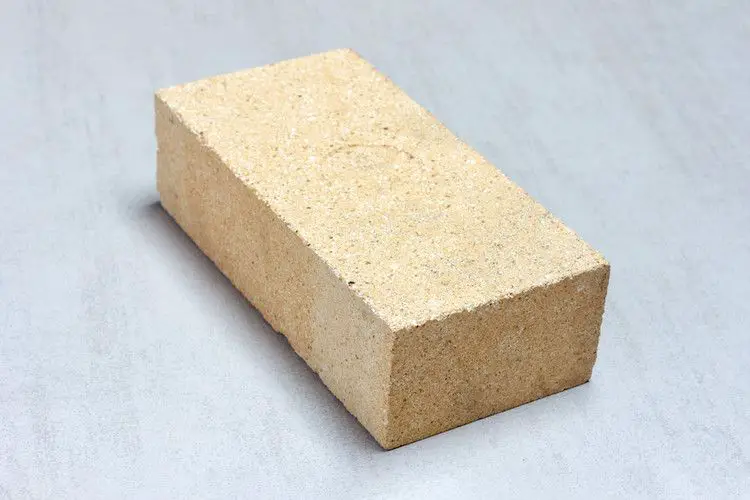Can I Use Clay To Make A Mold For Resin?
Resin casting involves pouring liquid resin into a mold and allowing it to harden, resulting in a solid plastic piece that retains the shape of the mold. It is commonly used to make jewelry, figurines, decorative objects, and prototype parts. One way to create a resin cast is by making a reusable mold out of clay.
Clay can be shaped by hand into the desired form. Resin is then poured into the clay mold and allowed to cure before being removed. This allows for the creation of resin pieces that have custom shapes and details that would be difficult to achieve by other mold making methods.
The introduction briefly explains what resin casting is and how making a clay mold allows for custom resin pieces. It introduces using clay as the mold material before resin is poured into it to make the cast.
Choosing the Right Clay
When choosing a clay to make a resin mold, it’s important to select one with properties like low shrinkage and the ability to capture fine detail. The clay also needs to be strong enough to withstand the casting process.
Polymer clays like Sculpey and FIMO are good options for resin molds. These clays are easy to work with, set at low temperatures, and maintain their shape well. Polymer clays have very little shrinkage, allowing them to pick up fine details.
Air-dry clays are another excellent choice. Clays like Creative Paperclay dry slowly and remain workable, making intricate sculpting easier. They’re durable when dry and have virtually no shrinkage. Just make sure the clay is fully cured before pouring resin.
Avoid clays that are water-based or contain high amounts of water. These may expand and shrink too much as they dry, losing small details. Oil and polymer-based clays are better suited for capturing the intricacies needed for resin casting.
Preparing the Clay
Once you have chosen the type of clay you want to use, the next step is to prepare it for mold making. Start by taking a lump of clay and kneading it with your hands to warm it up and make it more pliable. If the clay is stiff, you may need to condition it by letting it rest for a bit or massaging it until it becomes smooth and workable.
Roll or press the clay out on a clean, flat surface until it reaches your desired thickness for the mold walls. Aim for approximately 1/4″ to 1/2″ thick. The thicker the clay walls, the more sturdy your finished mold will be. If making a smaller mold, you may only need 1/8″ thickness. Take your time rolling and pressing the clay—any air bubbles or creases will show up in the final cast resin piece.
Make sure your clay is an even thickness throughout. You can use a roller tool or an acrylic block to help roll it out smoothly. The clay should be pliable enough to press out easily without cracking, but firm enough to hold its shape when making your mold.
Creating the Mold
When creating your resin mold out of clay, you’ll need to consider some basics of mold design. One key thing to avoid are undercuts, which are recessed areas that would prevent the finished resin piece from being removed from the mold. Your clay mold needs a draft angle so the resin can be pulled out smoothly.
To make the mold cavity, simply press your chosen object into the clay, being careful not to create any undercuts. Push the object in at an angle if needed, so the sides have a slight taper. The mold just needs to capture the general shape. Remove the object gently to reveal the cavity.
Make sure the cavity extends all the way through the clay, so you’ll be able to pour resin directly into it. Check for any imperfections in the cavity and smooth them out. You may need to press the object into the clay again to sharpen the details.
Once your mold cavity is formed, you’re ready to let the clay dry before pouring in the resin.
Letting the Clay Dry
After you’ve sculpted the clay into the desired shape for your mold, it’s important to let it dry thoroughly before pouring in resin. The drying time will depend on the type of clay you used and the thickness of the walls.
Air-dry clays are the quickest, drying within 24-48 hours if the walls are 1/4″ thick or less. Polymer clays take longer, requiring 1-3 days for thorough drying. Oil-based clays have the longest drying times, taking up to 5-7 days to fully cure.
Be patient and allow your clay mold to dry completely before proceeding. Rushing the drying with heat lamps or other accelerated methods risks cracks and deformities. The clay needs to set slowly to maintain its shape.
Test for dryness by touching the surface. There should be no indentation or sticky residue left on your finger. Also check for damp areas on the interior walls where moisture might be trapped.
Once fully dry, the clay mold is ready for the resin pouring step. Taking time to properly cure the clay is crucial for capturing all the detail in your finished cast.
Preparing the Resin
Once the clay mold has cured and dried thoroughly, the next step is to prepare the resin. It’s crucial to properly mix the resin according to the manufacturer’s instructions before pouring it into the mold.
Most standard casting resins consist of two parts – a resin and a hardener – that must be mixed together in the right proportions. The instructions will specify the exact ratio of resin to hardener that must be used.
Measure out the resin and hardener separately, following the amounts specified in the instructions. Mix the two parts together thoroughly in a disposable mixing cup or beaker. Use a stick or disposable spatula to stir the resin and hardener together until fully blended with no streaks.
Mix for at least 3-5 minutes, scraping the sides and bottom of the container periodically to ensure it is completely mixed. Properly mixed resin should be uniform in color and consistency before pouring.
You can also add colorants like resin dyes or pigments when mixing the resin to achieve custom colors. Metallic powders and other fillers like mica powder or glass beads can be mixed in as well for special effects. Always follow the product instructions for how much colorant or filler can be safely added.
Once fully mixed, the resin is ready to carefully pour into the prepared mold.
Pouring the Resin
Pouring the resin into the clay mold requires care to avoid trapping air bubbles. Start by gently pouring a small amount of resin into one corner of the mold. Let it fill in naturally, moving your pour across the mold slowly and steadily. Tilting the mold slightly can help the resin cover all areas.
If the resin seems to cling or not flow smoothly, you may need a release agent. Aerosol mold release sprayed lightly across the clay is one option. Petroleum jelly or other oils can also work. Apply just enough to improve flow without contaminating the resin.
Continue pouring slowly and deliberately until the mold is full. Use a toothpick or skewer to gently poke any visible bubbles, which will help them rise to the top. A propane torch passed briefly over the surface can also pop bubbles. Do not overheat or burn the resin.
Allow the resin to settle and top off any low spots before leaving it to cure fully. With care and patience during pouring, you can minimize bubbles in your finished resin cast.
Curing and Unmolding
Once you have poured the resin into the clay mold, you will need to allow adequate time for the resin to fully cure before attempting to unmold it. Resin cure times can vary greatly depending on the specific type of resin used, as well as the thickness of the cast piece.
Most resins will be fully cured within 24-48 hours at room temperature. Read the instructions for your specific resin to determine the recommended cure time. Be patient and allow the full cure time before unmolding for best results.
When working with clay molds, a bit of flexibility in the clay can actually aid the unmolding process. The flexible clay mold material allows you to gently flex and manipulate the mold to help release the cured resin cast from the mold.
Gently flexing and bending the clay mold often allows the resin piece to pop out more easily. Take care not to distort or warp the cured resin piece during unmolding. The flexibility of the clay allows unmolding without needing to tear apart a rigid mold.
Finishing
Once you’ve removed your resin piece from the clay mold, there are some finishing touches you can add for a smooth, polished look.
Sanding and polishing are important steps for removing any small imperfections and creating a glossy finish. Start with a coarse grit sandpaper like 120 and work your way up to finer and finer grits like 400 or 600. Be sure to thoroughly sand the entire piece. After sanding, you can buff and polish the resin using a cloth or polishing wheel charged with a polishing compound. This will make the surface beautifully smooth and shiny.
You can also apply coatings to get an ultra glossy finish. Options like UV resin, epoxy resin, polyurethane, and varnish can be layered over the top of sanded resin. Apply thin coats, allowing ample drying time in between. The coating helps protect the resin and makes the colors and patterns “pop” with an incredible glossy sheen.
Taking the time to properly finish your resin piece will allow you to achieve a clear, bubble-free surface with a brilliant luster. The sanding, polishing, and coating steps truly make resin creations shine.
Safety Tips
When working with resin and clay, it’s important to take proper safety precautions. Both resin and clay dust can be hazardous if inhaled or ingested. Here are some tips for staying safe when making a clay mold for resin:
Wear a respirator or dust mask. Wear an N95 respirator when sanding clay or mixing resin to avoid breathing in dust particles or fumes. Clay and resin dust can cause respiratory irritation.
Use disposable gloves. Wear latex, nitrile, or vinyl gloves when handling resin. Resin can irritate skin and cause allergic reactions. The gloves will protect your hands.
Work in a well-ventilated area. Work outdoors or near an open window. Avoid breathing in resin fumes, which can cause dizziness, headaches, and nausea if inhaled in high concentrations.
Protect your eyes. Wear safety goggles when pouring resin to prevent irritation if any splashes or drips. Resin droplets can damage the eyes.
Clean up spills properly. Use paper towels to wipe up any spilled resin immediately. Properly dispose of used mixing containers, sticks, and gloves so others are not exposed.


